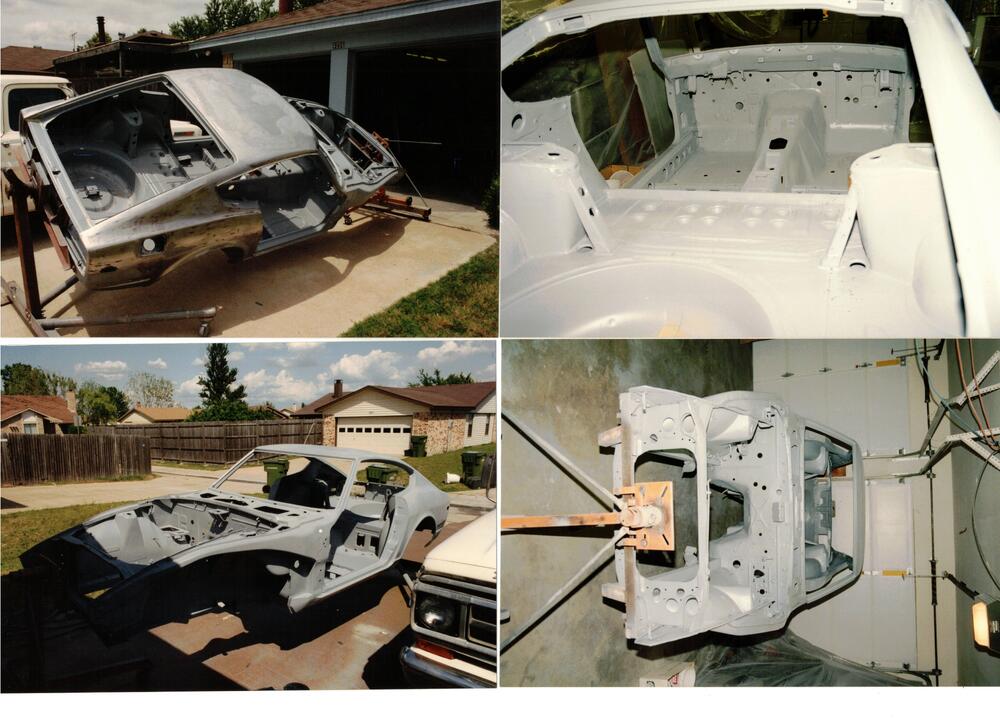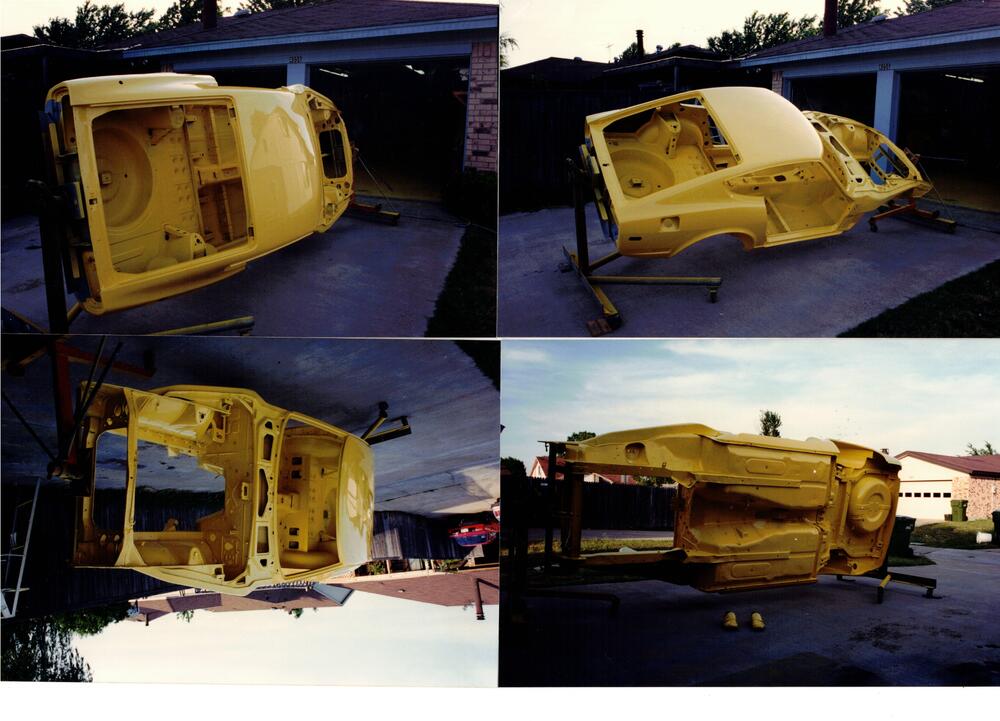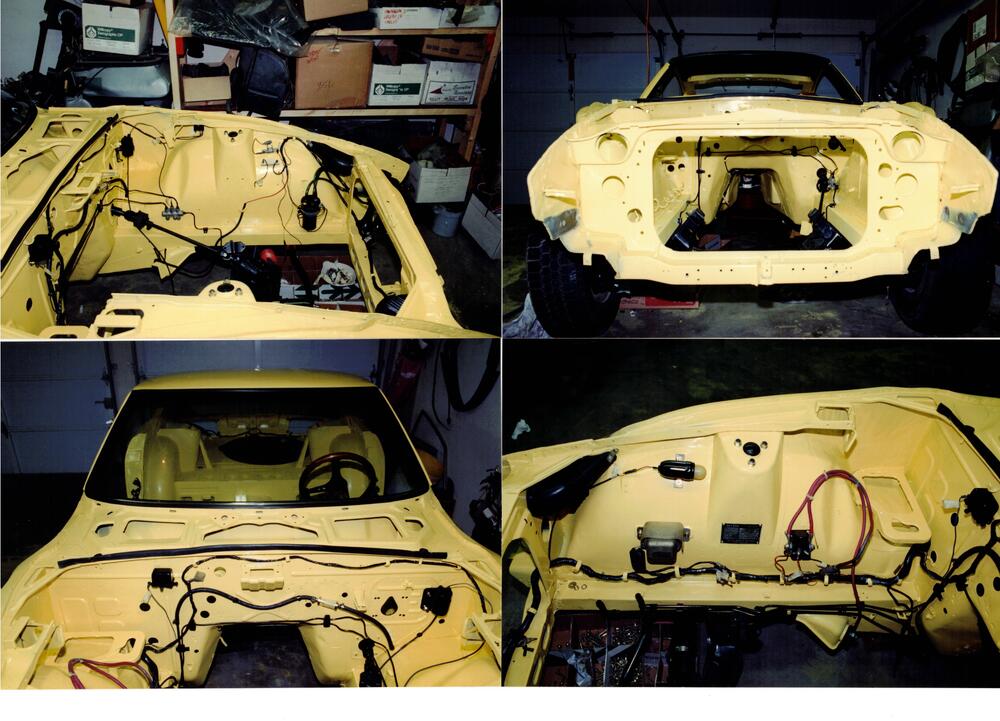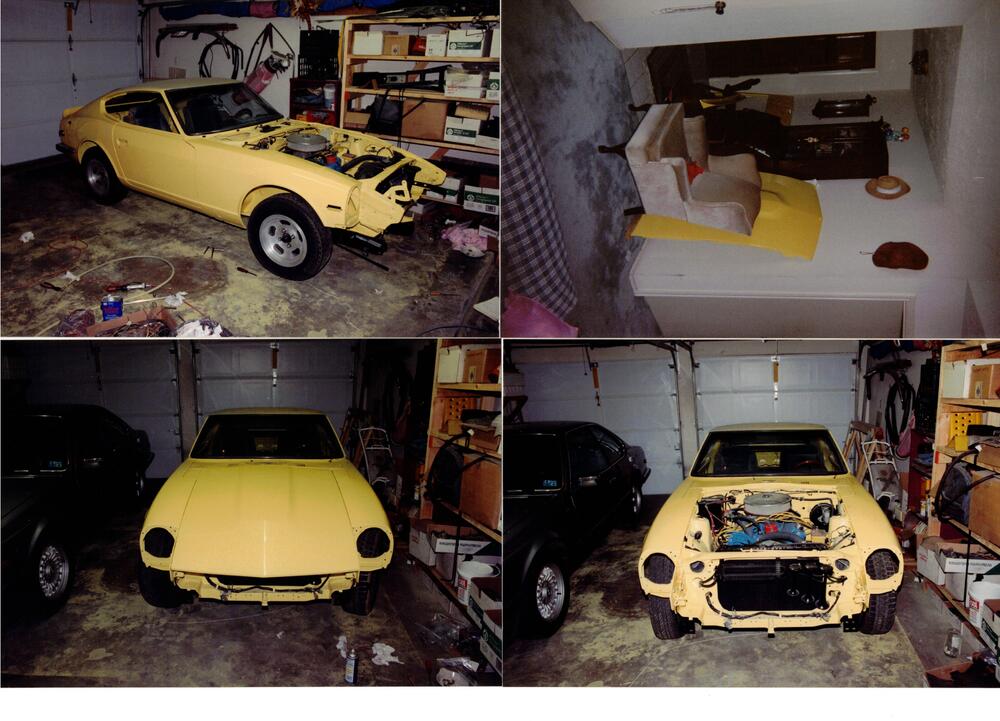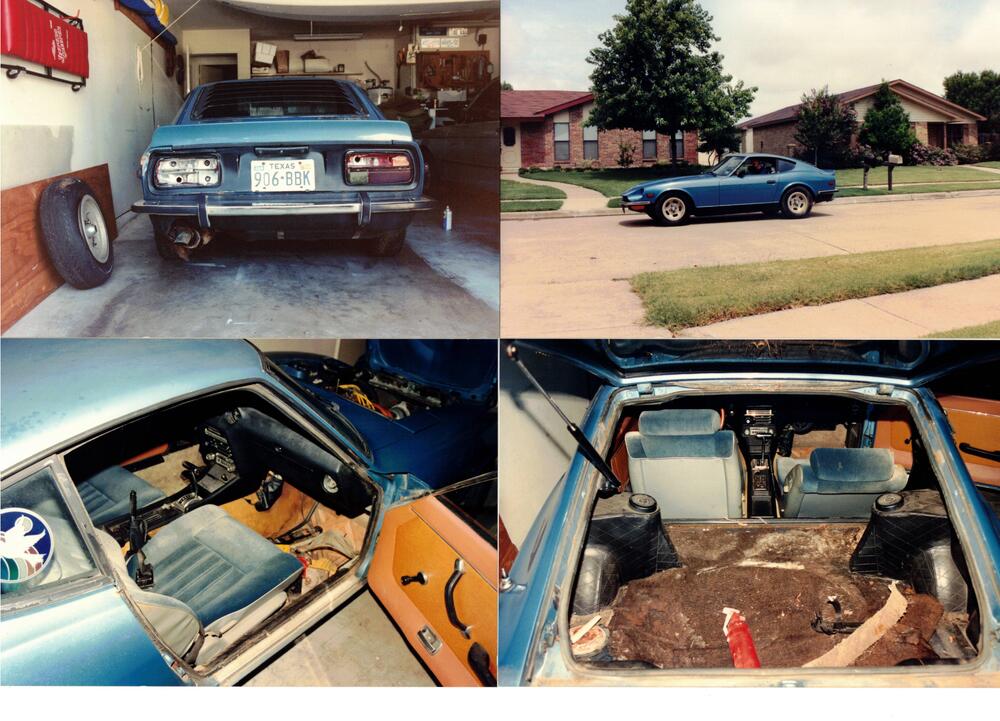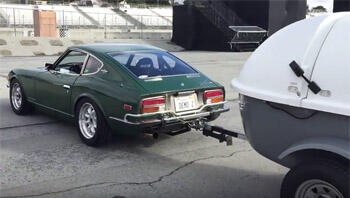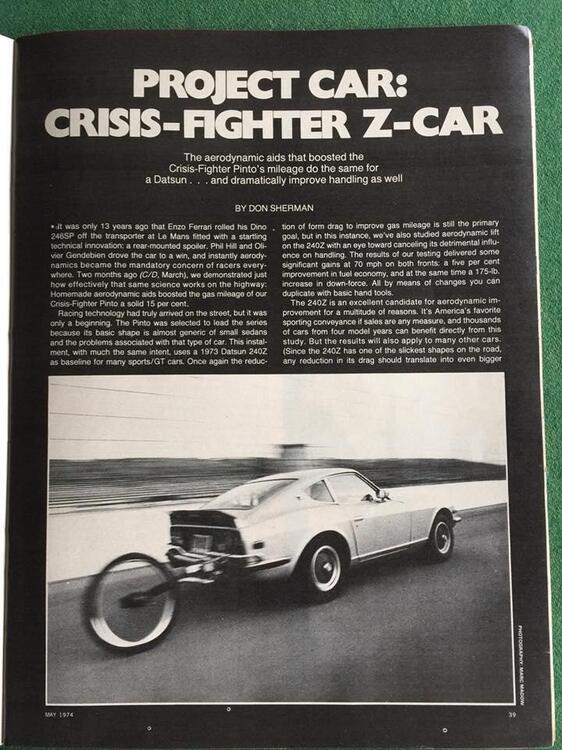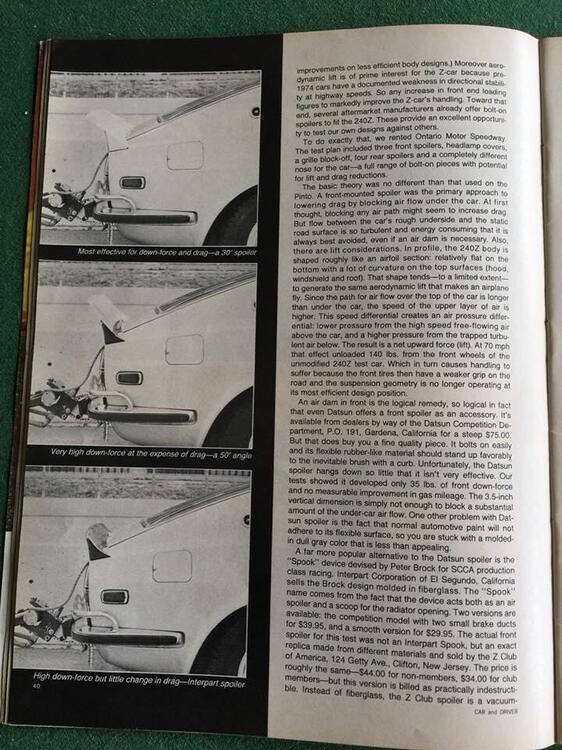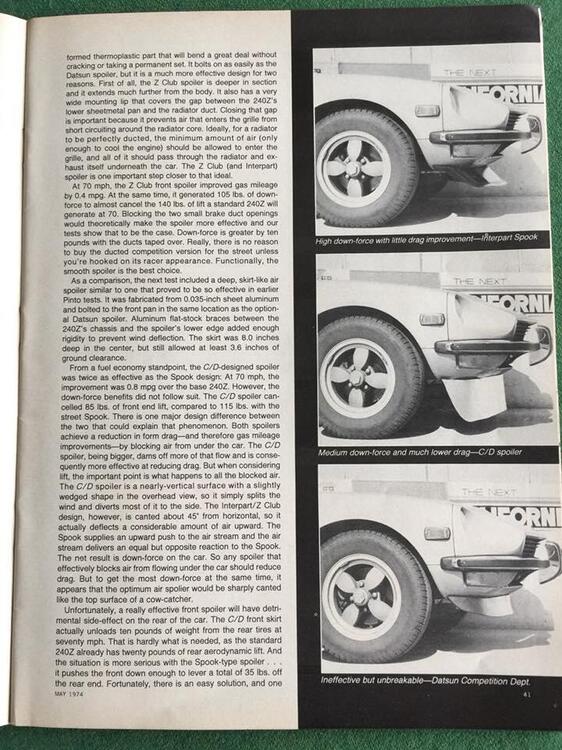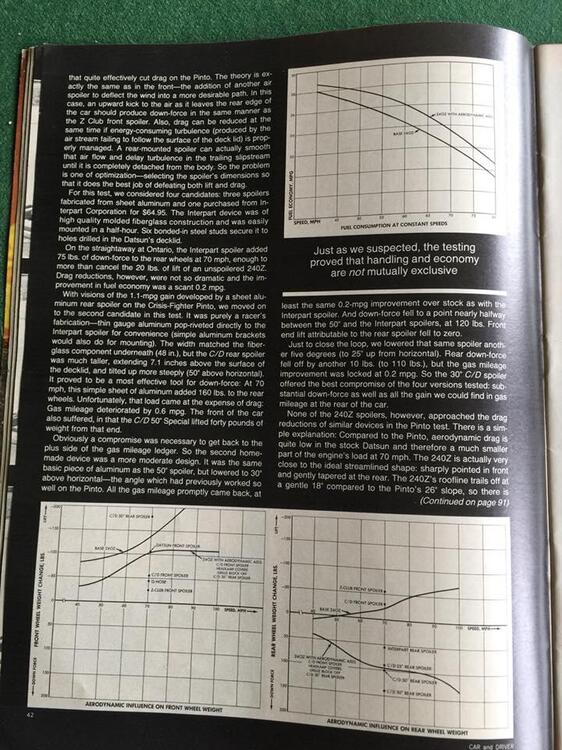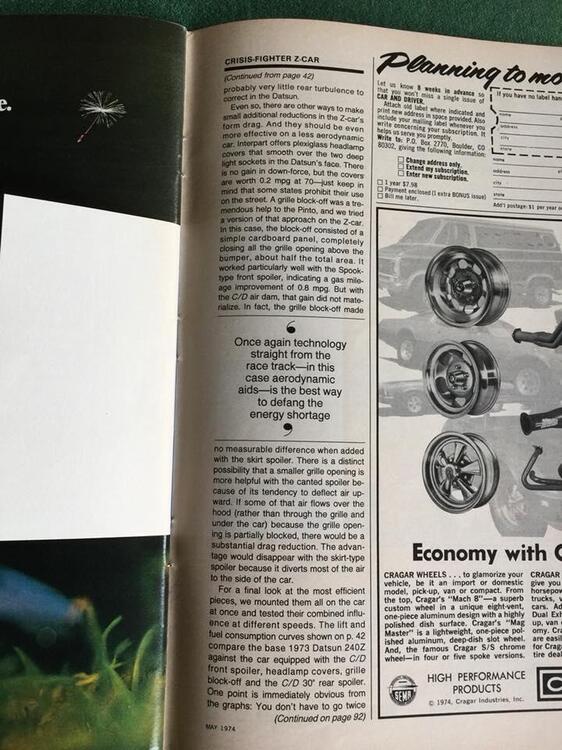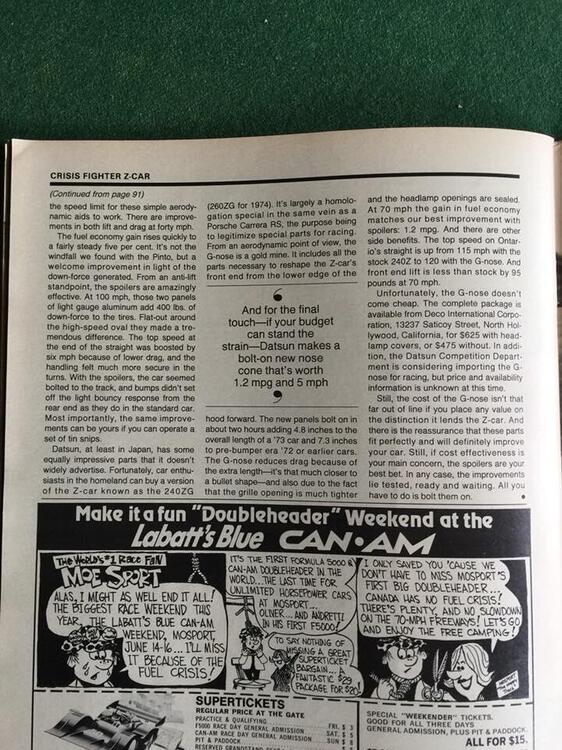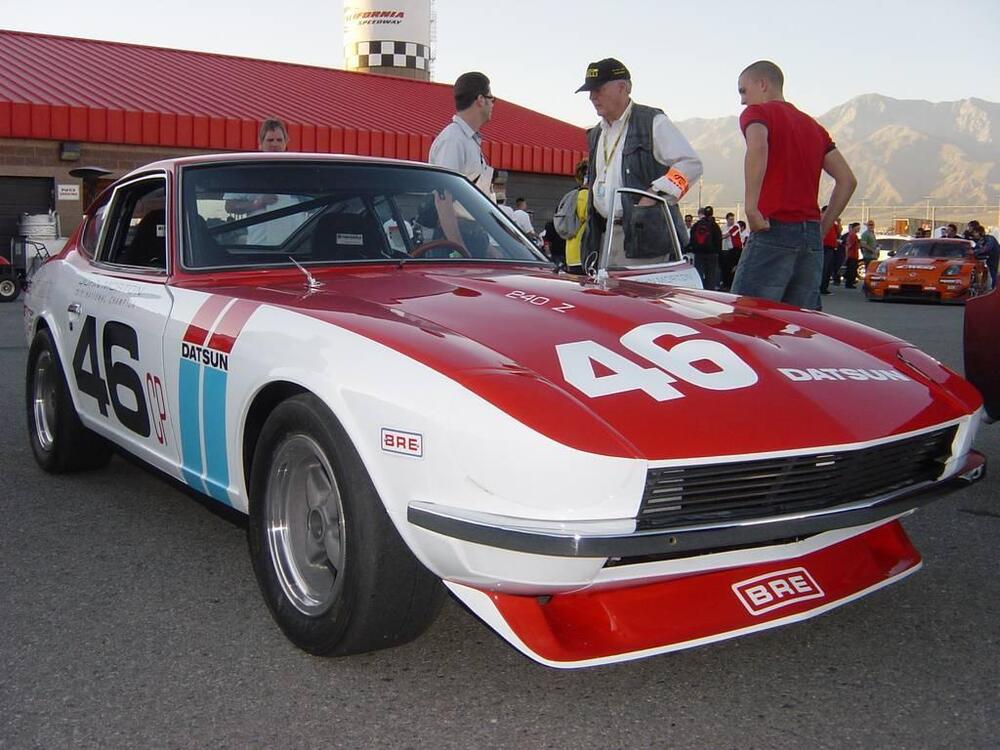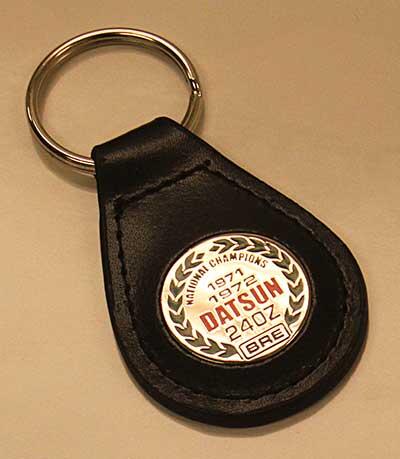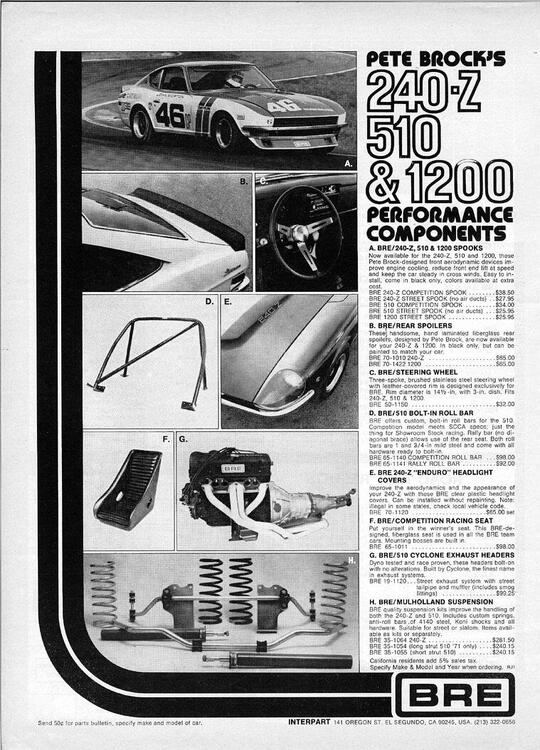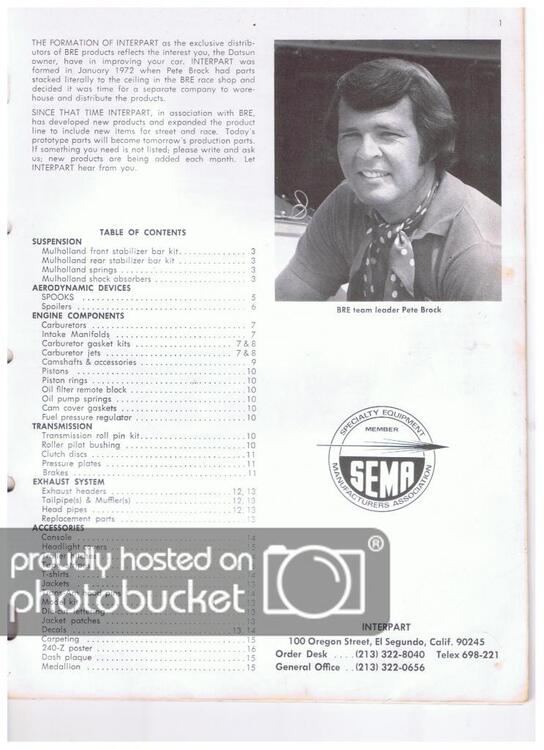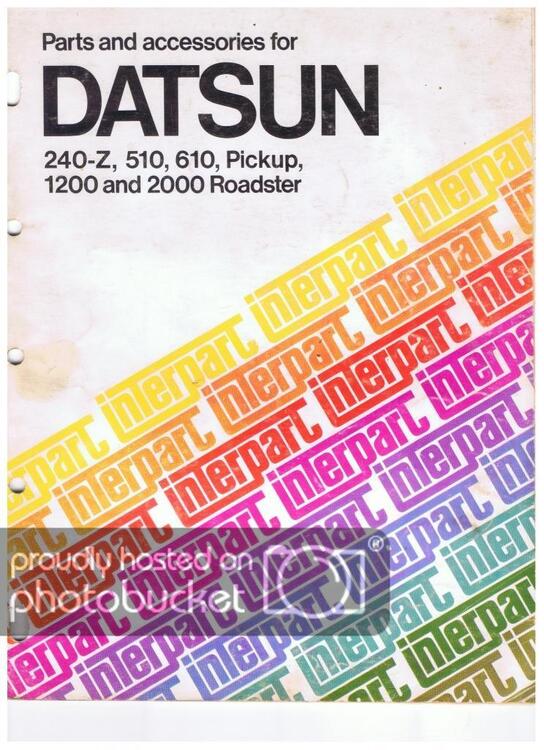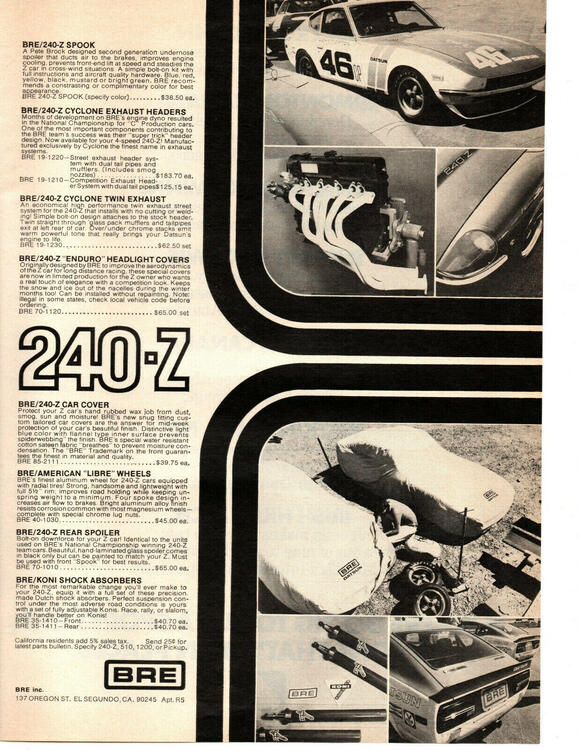
Everything posted by SpeedRoo
-
5/1970 240Z 03802
Another 240Z followed me home and I couldn't say no to it! It's a May 1970 car that was first sold by Datsun of Hawaii in July 1970, fitted with air conditioning. It then went to the mainland in the early 1980s and underwent an engine transplant. The original engine, 07174, was discarded and a 1965 Ford 289 fitted with an automatic transmission. Hydraulic power steering was also adapted and fitted. Non standard seats and tan trim also found their way into the car. Next stop was Texas where it was purchased by the last owner in 1990. He then brought it with him to Washington State and undertook a multi year rebuild. Mounted on a rotisserie he did a nut and bolt restoration, stripping the body back to bare metal and removing all the original blue paint. Grey rustproof primer was followed by Sunshine Yellow acrylic enamel before reassembly. All nuts and bolts were re-plated, all suspension components refurbished and painted, and all new Nissan sourced rubbers fitted. New Nissan door cards and center console installed, non standard race seats fitted and strut bars added in the engine bay and rear. The 289 was retained with 15" wheels added and the car completed by the mid 1990s. Only 18,000 miles have been added since. Must say the Ford V8 does not suit the car at all, the power steering is too light and the brakes too heavy (a later brake booster had been fitted when the engine was swapped). Driving it back to back with my BRE equipped August 1970 build 240Z was a revelation.......all the modifications have to go! So the plan is to refit the correct engine, rebuild the brakes back to standard and put an early 4-speed gearbox back into it. The paint is great considering it was done 30 years ago and garage kept ever since.
-
Z's on BAT and other places collection
I think this is an indication of the level they restored it to, painting everything on the rear suspension black at once (including all the nuts and bolts) seems a cheap easy way out. Don't think the factory did it that way!
-
[2022] What Did You Do To/with Your Z Today?
Scored new in box Interpart Mulholland shocks for the 240Z on EBay. Had been searching a few years for some fronts and up pops a set of front and rear. Will be great with the full BRE suspension setup I have.
-
Let's show vintage racing pictures. I'll start.
Love all the exhaust headers on the wall!
-
Z's on BAT and other places collection
He's still around, Satch edits Roundel magazine for the BMW club.
-
Z's on BAT and other places collection
It may be the setup from a Saab V4 engine. The NW USA was a hotbed for them years ago with Satch Carlson leading the charge.
-
24th October 1969 - The S30-series Z public debut.
Corrected for accuracy.
-
Z's on BAT and other places collection
Bit naughty not disclosing the engine was changed in the original listing. I think it's now dead in the water and the high bidder may want to withdraw their bid.
-
Z's on BAT and other places collection
@Terrapin Zas I mentioned the badges on the outside of my 1970 and 1973 both say Datsun 240Z. The later cars have 260Z and 280Z badges on the outside. I made no mention of id plates, just badges on the outside!
-
Z's on BAT and other places collection
I think you missed the point @Zed HeadI wasn't talking about value but the name of the car on the the actual car. My 1970 and 1973 cars both say Datsun 240Z. Neither has a Nissan or S30 badge at all. What they are worth is what someone is willing to pay if I put them up for sale.
-
Z's on BAT and other places collection
Really...this has become laughable! Calling a car by the badge on the outside is a problem, the woke police taking over yet again. It says Datsun 240Z on the outside so that's what I have.
-
1970 240Z Works Rally - the road to restoration
So Nissan provides the early 240Z to race teams in the USA expecting them to go racing with them. The engines are prepared for race use and high-rpm use and Nissan doesn't tell them the crankshaft is not fit for the purpose. The cars race, the crankshaft breaks yet you want us to think it's not Nissan's fault. Realising there is a problem they then change the crankshaft and fit it to all cars going forward rather than using the one you state has "fitness for expected use". Sorry not buying that explanation whatsoever. Wonder which crankshaft the rally 240Z were fitted with?
-
1970 240Z Works Rally - the road to restoration
Let me get this right, Nissan in Japan builds the car in Japan with a faulty crankshaft and sends it to the USA. But it was the fault of Nissan USA who are owned by Nissan Japan that the cranks were fitted to the cars, not Nissan Japan's fault. Wow have I got some great water front real estate in Florida that would be perfect for you! The USA was Nissan's most important overseas market, how's that....happy now? So the USA is their most important overseas market yet you think they didn't consider it necessary to compete here; yet they thought it more important, according to you statements, to compete in rallies in Africa, Monaco and the UK where they sold very few cars (in relative terms) and a lot less than in the USA. I love your blinkered view of the world where Japan is so superior and the USA is a country of uneducated hicks.
-
1970 240Z Works Rally - the road to restoration
THE USA was Nissan's biggest market for the 240Z, you would think they would have been interested in competing here so yes definitely "Planet USA" thinking. Maybe they weren't good enough to compete here, realised that and left it to the USA teams to make the car successful in racing in their most important market. Mind you the initial 240Zs weren't up to the task with the faulty crankshafts supplied from Japan for the first 3607 odd cars imported.
-
1970 240Z Works Rally - the road to restoration
Not sure why the article's author thinks " Nissan’s rallying saga needs and deserves a lot more recognition in the US". Nissan never rallied a car in the USA and pretty much left any racing to the teams competing in the USA like BRE and Sharp. Would have been cool for Nissan to send a 240Z rally car to compete in the Baja race but BRE did that for them as well. https://classicmotorsports.com/articles/bres-baja-datsun-240z-kisses-asphalt-goodbye/
-
BRE IMPROVED 240Z
Had some spare time so went through and cataloged all the bits the first owner purchased from BRE. Lots of receipts/fitting instructions/BRE stickers in the stash of stuff that came with my car. I'm sure there's some other bits I haven't discovered yet! The 8/1970 build was sold new in Roseburg, Oregon and first registered October 1970, still has the original blue Oregon license plates. BRE Updates 2nd gen Front Spook Rear spoiler Interpart Mulholland front ARB Interpart Mulholland rear ARB Interpart Mulholland Springs Interpart Mulholland Shocks ARE Libre 14" x 5.5" Alloy wheels BRE Dellorto 40mmDHLA carbs/linkage and manifold BRE Exhaust header G Machine Compression Rod bearing G Machine front & rear adjustable camber bushings Competition steering coupler Stewart Warner oil pressure gauge
-
BRE IMPROVED 240Z
Any pictures of it when showroom new @jfa.series1
-
BRE IMPROVED 240Z
There's a chap down in the Bay area that has a trailer hitch on his 240Z (the Green Hornet), has a built up engine and flies around Laguna Seca.....albeit with the trailer unhitced! http://lescollinsracing.com/engine/projects-engine/3435cc-z-racer
-
BRE IMPROVED 240Z
Speaking of front and rear spoilers, here's a copy of the 1974 magazine test comparing their performance.
-
BRE IMPROVED 240Z
@jfa.series1 Thanks for the link, certainly very different on the early race car. I think I prefer the later more efficient kind, looks more integrated into the front bodywork. Interesting that the selling dealer fitted them to your car before sale.
-
BRE IMPROVED 240Z
-
BRE IMPROVED 240Z
Some more period BRE ads featuring their goodies! Also a BRE key ring celebrating the SCCA National championship wins in 1971 and 1972, if anyone has a spare I'm looking for one!
-
BRE IMPROVED 240Z
I think Ger Brock were one of many shops that raced and prepared Z cars back in the day. I don't think they were associated with Peter Brock of BRE but seem to have their products in their catalog. If they were catering for the 280Z they were probably in business after Peter had left BRE/Interpart and gone hang gliding.
-
BRE IMPROVED 240Z
Here's a copy of the BRE catalog from March 1971 before Interpart was set up. BRE Z parts catalog 3_71.pdf
-
BRE IMPROVED 240Z
As an owner of a 1970 240Z with many original BRE parts fitted to it back in period by the original owner, I wondered how many other 240Z are out there so equipped. I found parts were sold by both BRE and later Interpart from 1972, covering every aspect of the 240Z from body to suspension and the engine as well. Seems everything from improved road performance to all out racer were catered for. There was a 1971 240Z on BAT recently that had lots of the original upgrades: https://bringatrailer.com/listing/1972-datsun-240z-177/





